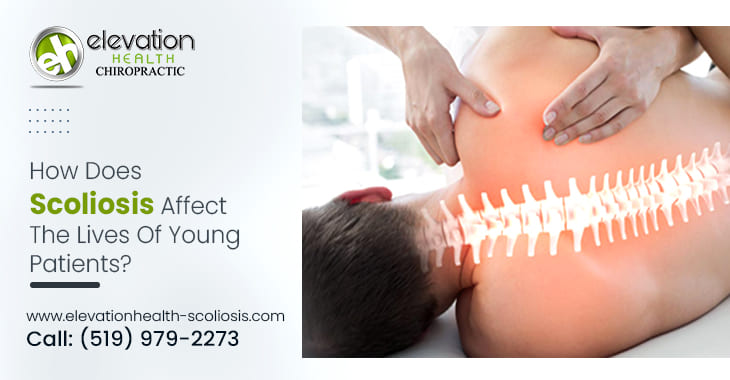
Scoliosis is a common spinal condition that affects individuals of all ages, but it can have a particularly significant impact on young patients. As a leading Chiropractor, Dr Brian Nantais of the Nantais Family Chiropractic at the Elevation Health Chiropractic clinic in Canada understands the challenges young individuals face with scoliosis.
Here are some common visible signs of scoliosis in youngsters as observed by Dr Brian Nantais of the Nantais Family Chiropractic:
One of the early noticeable signs of scoliosis is uneven shoulders. When viewed from behind, one shoulder may appear higher or more prominent than the other.
As scoliosis progresses, the spine’s curvature can cause an uneven waistline. This may be observed as one side of the waist appearing higher or more curved than the other.
Scoliosis can cause the ribcage to become asymmetrical. When observing the individual from the back, one side of the ribcage may protrude more prominently than the other side.
In some cases, the spinal curve in scoliosis may be visible when the individual bends forward. This can be observed as a pronounced “S” or “C” shape along the spine. In this blog, we will explore the various ways scoliosis affects the lives of these patients, highlighting the importance of early detection and appropriate treatment.
Spinal curvature: Scoliosis causes an abnormal sideways curvature of the spine, which can result in an uneven shoulder or hip alignment. This can lead to difficulties with balance and posture.
Restricted mobility: As scoliosis progresses, it can lead to stiffness and reduced flexibility in the spine, limiting the range of motion and hindering everyday activities.
Self-esteem and body image: Young patients with scoliosis may experience self-consciousness about their physical appearance due to visible changes in posture or asymmetry. This can lead to a negative impact on self-esteem and body image.
Social challenges: The emotional toll of scoliosis can affect social interactions, as some individuals may withdraw or avoid participating in physical activities to avoid drawing attention to their condition.
Back pain: Scoliosis can cause chronic back pain, which can vary in intensity. It depends on the severity of the spinal curvature. This pain can be debilitating and affect the daily activities and overall quality of life.
Muscular imbalances: Scoliosis can result in imbalances in the muscles surrounding the spine, leading to additional discomfort and muscle fatigue.
Physical limitations: Scoliosis can make it challenging for young patients to engage in physical activities or sports due to pain, reduced flexibility, or fear of injury.
Difficulty with clothing: Scoliosis can cause clothing to fit improperly, making it difficult for young patients to find comfortable and well-fitting clothes that accommodate their unique body shape.
Progression of the condition: If left untreated, scoliosis can worsen over time, potentially leading to severe spinal deformities and increased health risks.
Respiratory function: Severe scoliosis can compress the chest cavity, limiting lung capacity and affecting respiratory function. This can result in fatigue and reduced endurance.
If you are facing the above challenges, then you don’t have to anymore. Seek help from a leading Chiropractor, Dr Brian Nantais of the Nantais Family Chiropractic at the Elevation Health Chiropractic clinic in Canada today.

